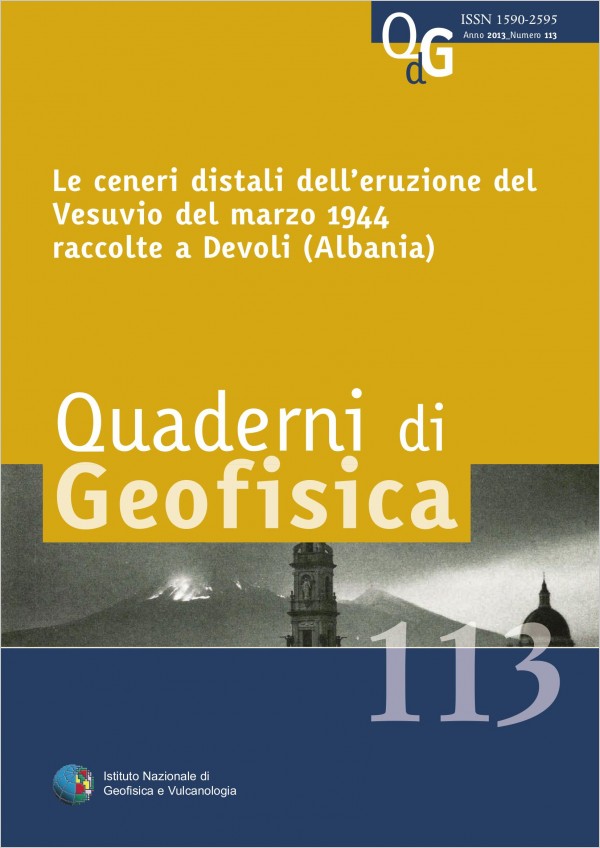Le ceneri distali dell’eruzione del Vesuvio del marzo 1944 raccolte a Devoli (Albania)
Main Article Content
Abstract
Bout 70 years since the last eruption of Vesuvius in March 1944, the authors received a sample of volcanic ash collected on the night between 22 and 23 March 1944 at Devoli (Albania), by Prof. Antonio Lazzari engaged in oil prospecting at the Shipyard AIPA. This ash sample, "jealously" guarded by Prof. Ludovico Brancaccio, has delivered to the authors for further studies on the event, during the collection of witness on the Vesuvius 1944 eruption, published in a book edited by the Vesuvius Observatory -INGV in 2010 by Elena Cubellis and Aldo Marturano. The volcanic ash, collected in Albania, has been attributed to the most violent phase of the eruption (the eruption began on March 18 and was declared ended April 7), defined by the then Director of the Vesuvius Observatory Giuseppe Imbò, explosionsmixed phase, which began at about 12 on March 22 and continue for approximately 24 hours. Due to the scarcity of proximal deposits, the description of Imbò remains the main track for the study of this phase of the eruption. Therefore, the sample of volcanic ash analyzed in this study, is of particular importance being the distal facies examined. The ash was subjected to laboratory analysis and geochemical and textural results, when compared with the available data on other phases of the eruption, have allowed us to formulate a hypothesis about the mechanisms causing a sudden increase in the degree of explosiveness. In particular, the obtained data showed a rapid increase in the height of the eruption column, which reached, probably, an altitude higher (~ 10 km) than that reported by contemporary sources. These results have important implications for volcanic hazard; in fact, if such a scenario would to occur in the future, the effects on the territory which today is highly urbanized, could be critical.
Article Details
Section
Article

This work is licensed under a Creative Commons Attribution 4.0 International License.

